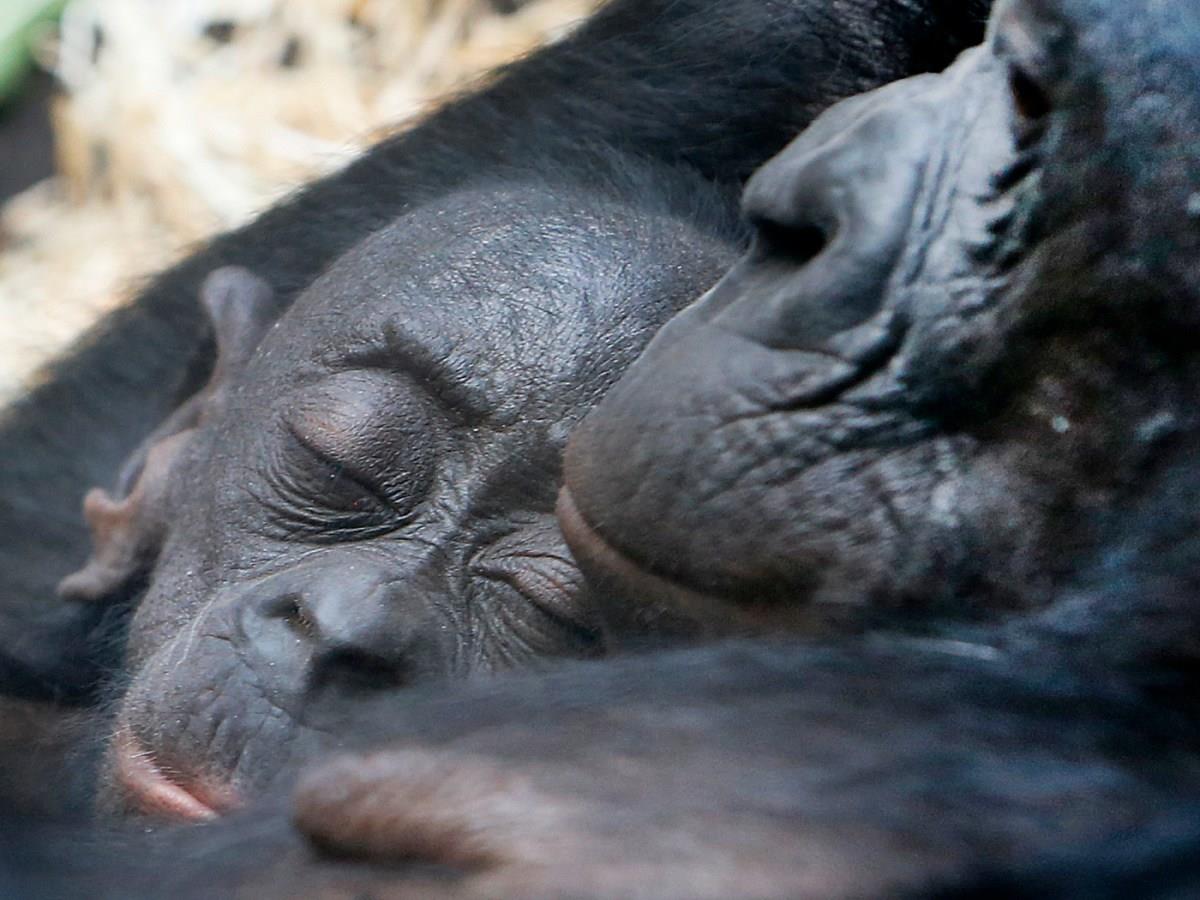
Bonobo Calls Resemble Word Combinations Of Humans
-
Français
fr
Le langage des bonobos pas si différent de celui des humains
Original
Read more: Le langage des bonobos pas si différent de celui des humain
This is the first empirical study to demonstrate this type of communication in animals, write the scientists, led by Simon Townsend of the UZH, in the journal Science.
+ Get the most important news from Switzerland in your inbox
The ability not simply to align individual sounds, but to combine them in such a way as to create new, independent meanings, has until now been considered a characteristic of human language.
In linguistics, this is known as compositionality. Compositionality can take two forms: trivial and non-trivial. In trivial compositionality, each word retains its independent meaning. For example,“blonde dancer” refers to a person who is both blonde and dances.
Non-trivial compositionality, on the other hand, involves a more complex, more nuanced relationship, in which the meaning is not simply the direct sum of the words involved. A“bad dancer” is not simply a bad person who dances. In this case, the adjective modifies the meaning of the expression as a whole.
Studies on birds and primates have shown that some animals are capable of combining individual sounds, but until now there has been no direct evidence that animals use non-trivial compositionality in their communication.
A bonobo dictionaryFor their study, the Zurich scientists created a kind of dictionary by analysing 700 recordings of wild bonobo calls in the jungle of the Democratic Republic of Congo. For each call, they determined what it meant.
Each time the monkeys screamed, they noted exactly what was happening, for example how they behaved, how the other monkeys reacted or where they were. The researchers noted a total of 300 contextual characteristics of this type.
“This represents an important step towards understanding the communication of other species, as it is the first time that we have determined the meaning of calls across the whole vocal repertoire of an animal,” explains Mélissa Berthet from the UZH, first author of the study, quoted in a university press release.
In a second phase, the scientists examined the significance of the combinations of certain calls, showing that some were non-trivial compositions that went beyond the sum of their individual parts.
Common ancestry“Our results show that non-trivial compositionality is not limited to humans,” write the authors of the study. The study therefore shows that the ability to form complex meanings from smaller sounds existed long before human language.
“Our study therefore suggests that our ancestors already extensively used compositionality at least 7 million years ago, if not more,” concludes Townsend. Humans and bonobos share a common ancestor dating back an estimated seven to thirteen million years. Scientists from Harvard University also took part in this work.
Adapted from French by DeepL/ac
How we workWe select the most relevant news for an international audience and use automatic translation tools such as DeepL to translate them into English. A journalist then briefly reviews the translation for clarity and accuracy before publication. Providing you with automatically translated news gives us the time to write more in-depth articles. The news stories we select have been written and carefully fact-checked by an external editorial team.
Did you find this explanation helpful? Please fill out the short survey on this page to help us understand your needs.
Popular Stories More Swiss Abroad Why Switzerland hasn't got a capital city Read more: Why Switzerland hasn't got a capital cit
Legal Disclaimer:
MENAFN provides the
information “as is” without warranty of any kind. We do not accept
any responsibility or liability for the accuracy, content, images,
videos, licenses, completeness, legality, or reliability of the information
contained in this article. If you have any complaints or copyright
issues related to this article, kindly contact the provider above.















Comments
No comment